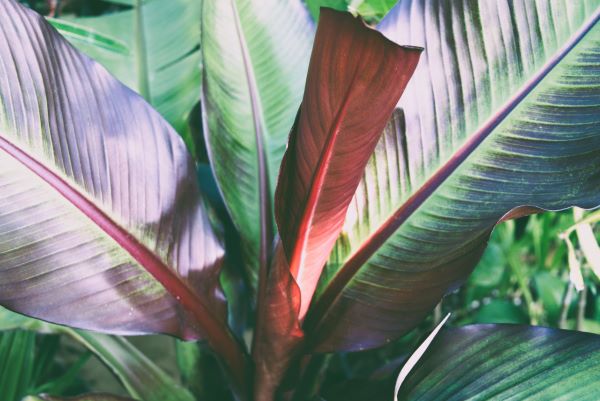Welcome to Local Gardener where today we explore the untold story of one of the world’s most essential crops. In this episode, we’re delving into a plant that is vital to the survival of millions of people, but one that remains relatively unknown as a food source outside its native regions—the ensete banana. In East Africa, particularly Ethiopia, the ensete banana, also known as the “false banana,” is more than just a crop—it’s a cornerstone of food security and cultural resilience.
This is an investigative journey into the ensete banana’s history, its importance as a food source, and its potential as a climate-resilient crop. Join us as we explore how a plant, often overshadowed by its more famous banana cousin, has quietly sustained communities for thousands of years.
The story of the ensete banana begins in the Ethiopian Highlands, where this ancient crop has been cultivated for more than 10,000 years. Ensete, or Ensete ventricosum, is unique to this region. While it belongs to the same family as the more familiar dessert banana, it plays a very different role. Ensete is not grown for its fruit—its small, inedible bananas are not what sustains communities. Instead, the plant’s most valuable parts are its starchy underground corm and its massive pseudostem.
For centuries, the people of Ethiopia have relied on ensete as a year-round source of food, especially in times of drought or famine. Its nickname, “the tree against hunger,” comes from the plant’s remarkable ability to survive in harsh conditions where other crops fail. In the highlands, where rainfall can be scarce and unpredictable, ensete thrives. It can endure long dry periods by storing water in its thick stem, and it can grow on poor soil that would be unsuitable for most crops.
But how did this plant become so vital, and why does it remain central to the lives of millions today?
The ensete banana was likely first domesticated by early agricultural communities in Ethiopia thousands of years ago. Archaeological evidence suggests that even in ancient times, ensete was a key part of the highland diet, providing a reliable and nutritious source of carbohydrates. In a region where food insecurity has always been a pressing issue, ensete’s ability to provide sustenance year after year made it indispensable.
Unlike annual crops that need to be planted and harvested within a single season, ensete is a perennial plant. Once established, it can be harvested any time over several years, making it an ideal crop for subsistence farming. The harvesting process itself is a cultural tradition. When the plant matures—typically after about five to ten years—the farmer digs up the corm and strips the plant’s pseudostem. These parts are then fermented underground for several weeks, turning them into a food called “kocho,” a starchy, dough-like staple that forms the basis of meals in many Ethiopian households.
In the densely populated highlands, ensete is more than just a food—it is woven into the cultural and social fabric of the people who grow it. It is often planted around homes and passed down through generations, signifying stability, tradition, and resilience.
The importance of ensete goes beyond food security. In Ethiopia, the plant’s versatility extends to every part of life. The fibers from the pseudostem are used to make ropes, mats, and even traditional houses. Its leaves are used for wrapping and serving food. The plant even has medicinal uses, with some parts believed to treat ailments such as gastrointestinal issues.
Despite its importance in Ethiopia, ensete has never gained the global recognition of crops like wheat, maize, or even its banana cousin. This is partly because it remains largely a subsistence crop, grown and consumed locally rather than being traded internationally. But for the millions who depend on it, ensete represents a form of resilience in the face of a rapidly changing climate.
In recent years, scientists and agricultural experts have begun to realize ensete’s potential to be a climate-resilient crop. As droughts and extreme weather become more common in East Africa, ensete is seen as a crucial part of the region’s future food security. Research has shown that it can withstand extreme conditions that would devastate other crops, making it a valuable tool in the fight against hunger and climate change.
Yet, outside of East Africa, ensete remains relatively unknown. It is a plant that grows in the background, quietly supporting millions, yet rarely receiving the attention it deserves.
And now, in an unexpected turn, you can even grow ensete in your own garden here in the UK. While it may seem like a plant from the highlands of Ethiopia wouldn’t thrive in British gardens, ensete has been adapted for ornamental use and can flourish in the right conditions. You can now find ensete plants available through specialty nurseries.
If you’re interested in growing this fascinating and culturally significant plant, UK Tropicals offers detailed guides on how to cultivate ensete in temperate climates. It thrives in mild conditions, with plenty of moisture and protection from frost. Whether you’re growing it as an ornamental or want to explore its deeper connection to one of the world’s oldest food systems, ensete can now be a part of your gardening experience. Visit UK Tropicals to learn more and discover how you can help continue the legacy of the ensete banana in your own backyard.
Thank you for joining us on Local Gardener Stay tuned for more stories about the plants that shape our world and the people who depend on them. Until next time, remember—every plant has a story, and every story is worth unearthing.




